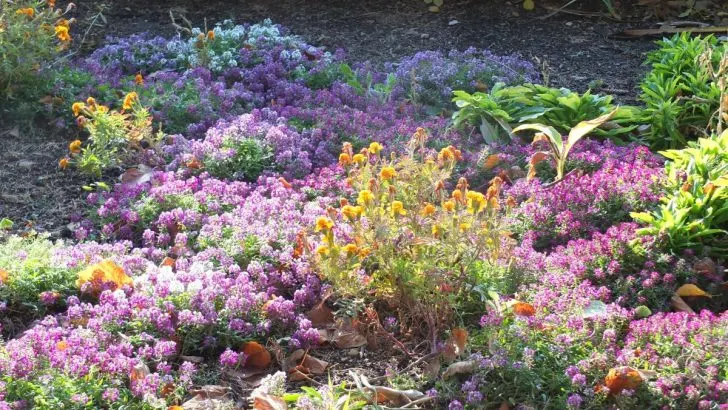Winter doesn’t have to be a dull, colorless season in your garden. Even amid the frost and snow, there are plants that defy the cold, bringing splashes of color and life to otherwise monochrome landscapes. By choosing the right winter blooms, you can create a breathtaking garden that stands out against winter’s icy backdrop.
This matters because a vibrant garden provides more than aesthetic pleasure; it supports local wildlife and can uplift your mood during the darker months. By including these resilient plants in your garden design, you can enjoy an ecosystem that thrives even when the temperature drops.
1. Hellebores: Winter’s Rose

Known as the ‘Christmas Rose’, Hellebores are a gardener’s favorite for winter blooming. These hardy perennials start to bloom late in the winter, offering an array of colors from white to deep purple. Their nodding flowers are not just pretty; they are a crucial source of nectar for early pollinators.
Position them in a spot with partial shade and well-drained soil, and watch them flourish as early as December. Hellebores are a testament to endurance, thriving even when the snow blankets your garden.
2. Winter Jasmine: A Burst of Sunshine
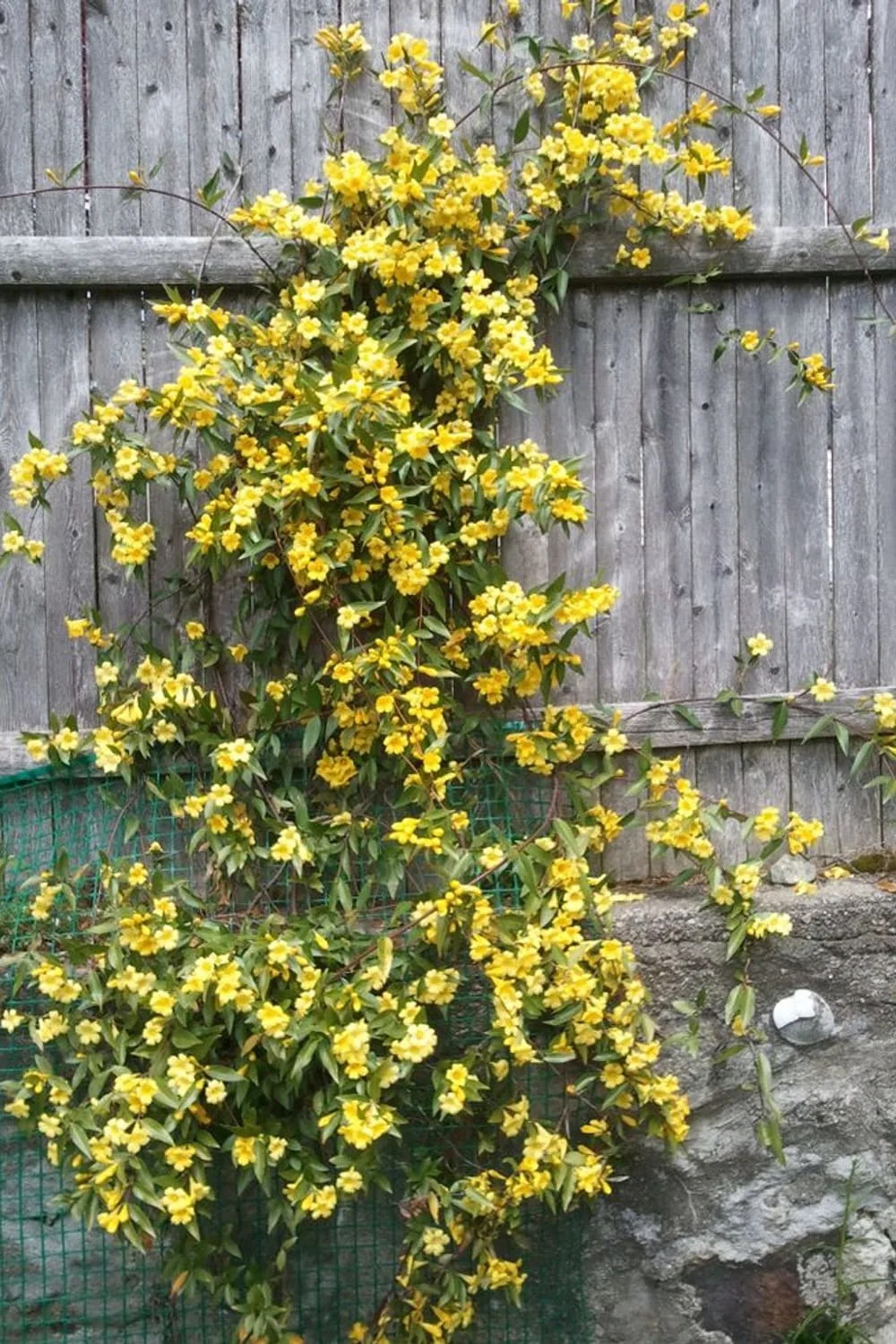
Winter Jasmine is like a ray of sunshine on a cloudy day. Its bright yellow flowers bloom in late winter, often before the leaves appear. This vigorous climber covers fences and walls beautifully, adding a splash of color to any garden.
It’s low-maintenance and thrives in full sun or light shade, making it a versatile choice for any gardener looking to brighten up the winter garden. Plus, it’s a fantastic way to add vertical interest to your landscape.
3. Snowdrops: Delicate Yet Tenacious
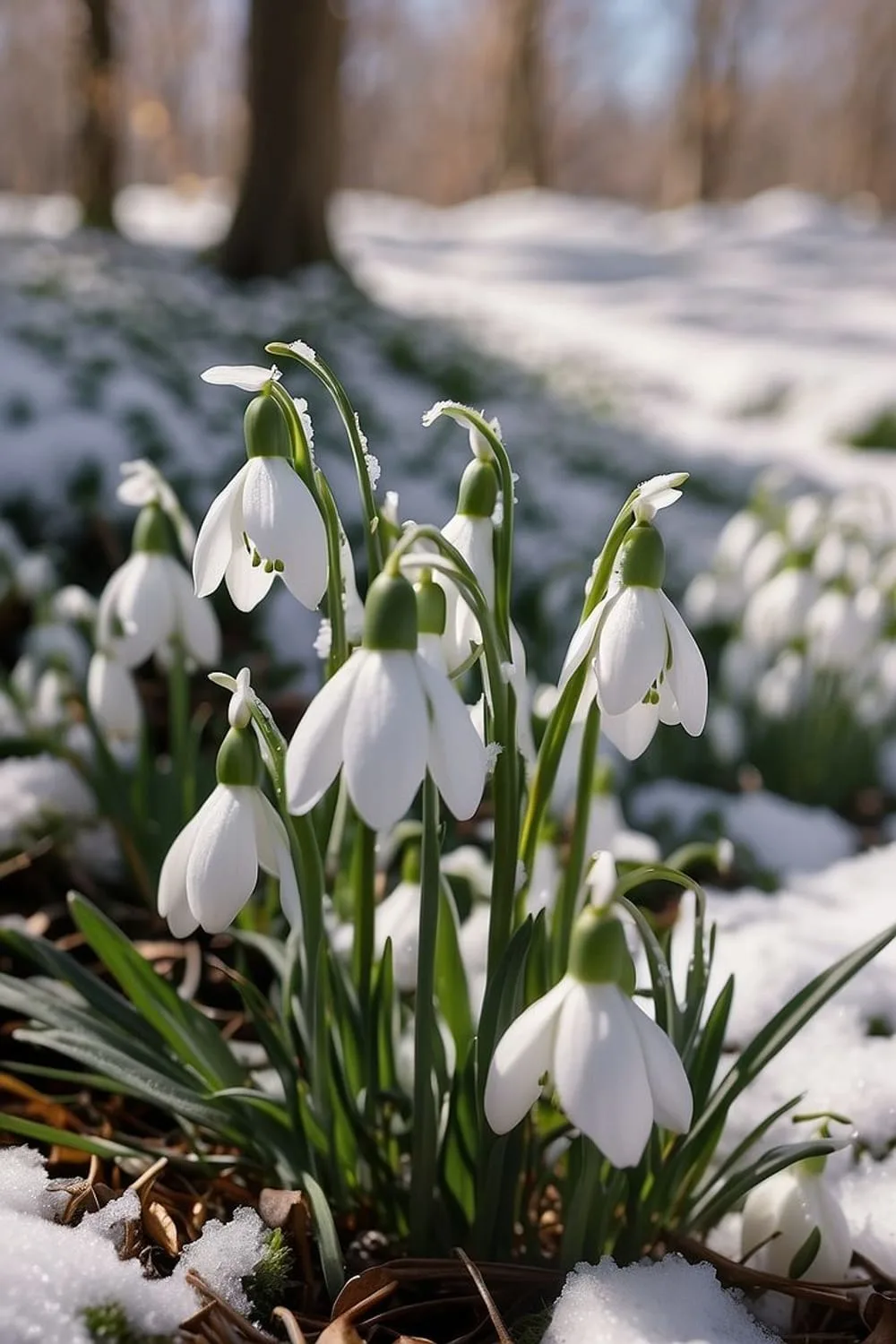
As their name suggests, Snowdrops are a symbol of winter resilience. These dainty white flowers push through the snow, heralding the approach of spring. Their simple beauty and early bloom time make them a beloved sight.
Plant them in drifts under deciduous trees for a naturalistic look, or in containers near walkways where you and your guests can admire their delicate forms. They prefer a spot with rich, moist soil that’s not prone to waterlogging.
4. Camellias: Timeless Elegance
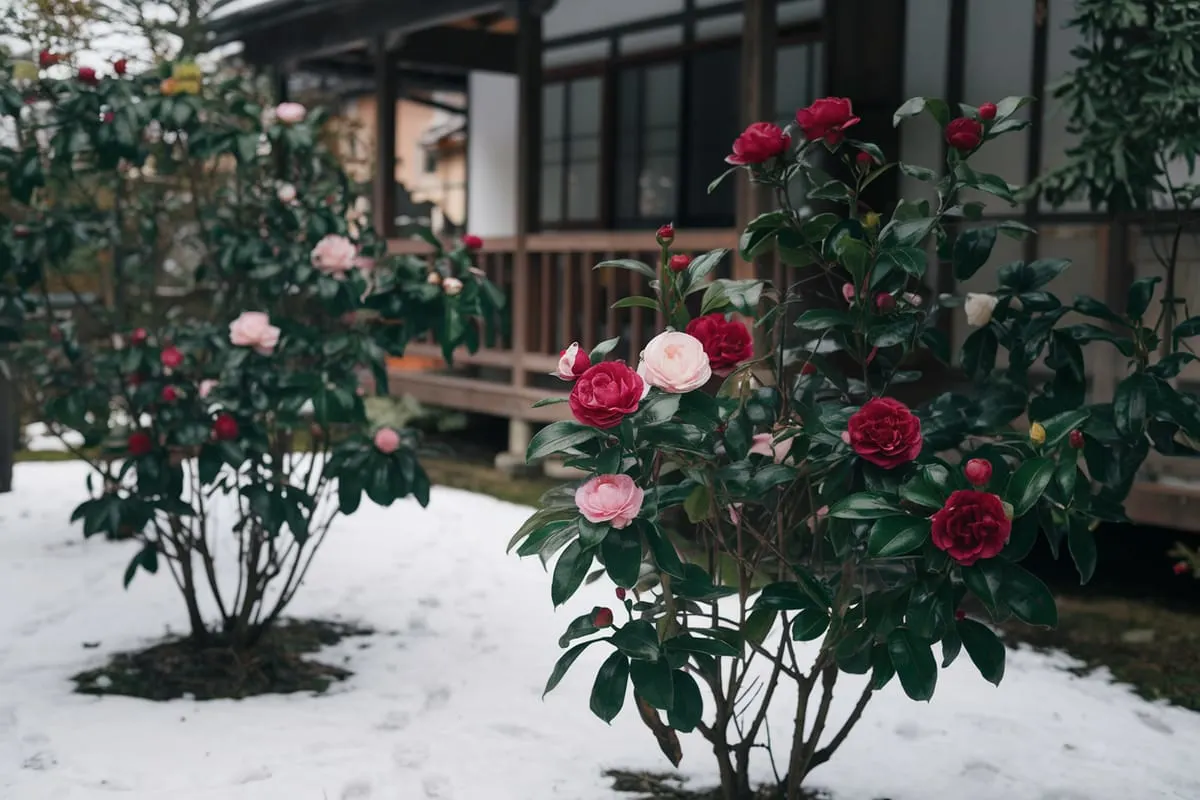
No list of winter blooms is complete without the Camellia. Known for their glossy leaves and stunning, rose-like flowers, Camellias bloom in shades ranging from deep red to pink and white, offering a sophisticated touch to any garden.
These shrubs thrive in sheltered spots with some protection from harsh winds. Ensure they have acidic soil, and you’ll be rewarded with a splendid display through the winter months.
5. Witch Hazel: A Fragrant Surprise
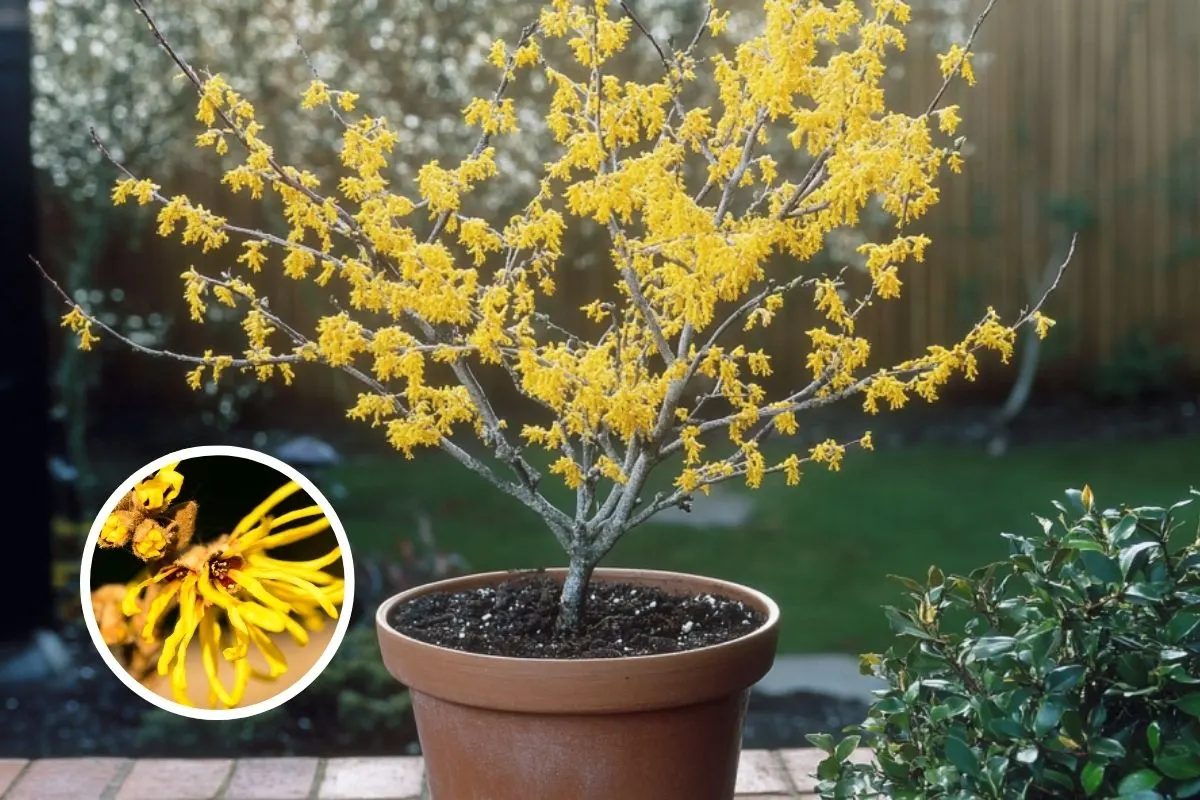
Witch Hazel might not win any beauty contests, but its unique, spidery flowers and intoxicating scent make it a noteworthy winter bloom. These shrubs often start blooming in late autumn, continuing into winter, with colors ranging from yellow to orange and red.
They prefer well-drained soil and a sunny or partly shaded position. Besides their visual appeal, they are invaluable for their fragrance, adding another sensory dimension to the garden.
6. Winter Aconites: Golden Carpets
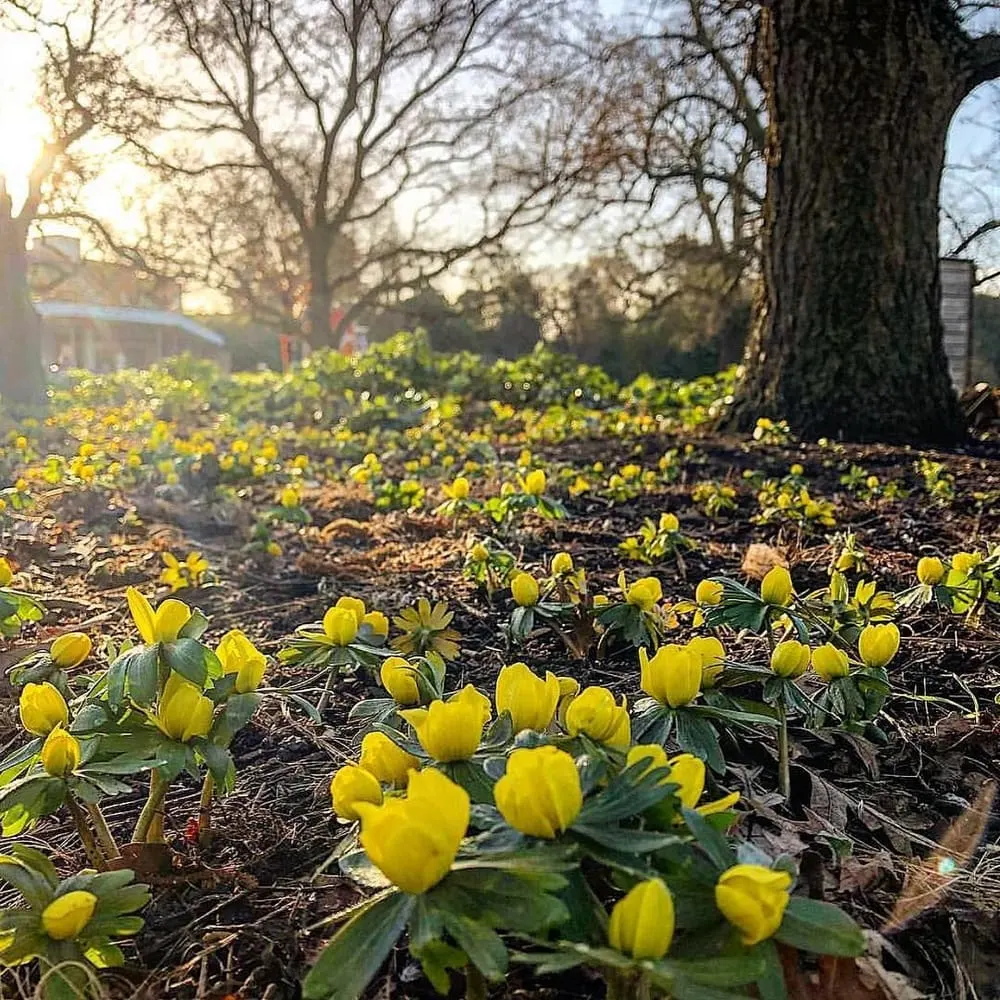
Winter Aconites are small but mighty, creating golden carpets across gardens. Their cheerful, buttercup-like flowers are a delight in late winter. Plant them in groups for an impactful display, where they can naturalize over the years.
These plants thrive in partial shade and humus-rich soil. They’re perfect for woodland settings, adding a touch of sunshine under the trees’ bare branches.
7. Cyclamen Coum: Hardy Little Gems
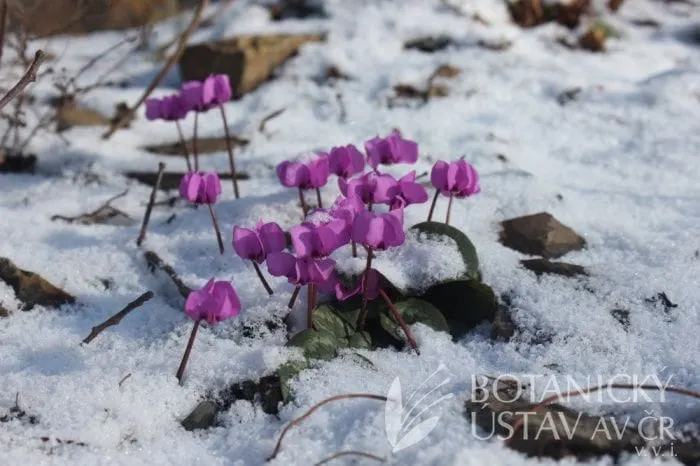
With their heart-shaped leaves and delicate flowers, Cyclamen coum are small treasures in the winter garden. These hardy perennials bloom in shades of pink, red, and white, often adorned with charming leaf patterns.
They prefer well-drained soil and will thrive in the dappled shade of deciduous trees. Despite their delicate appearance, they’re quite robust, bringing subtle beauty to winter landscapes.
8. Viburnum: Versatile Beauty
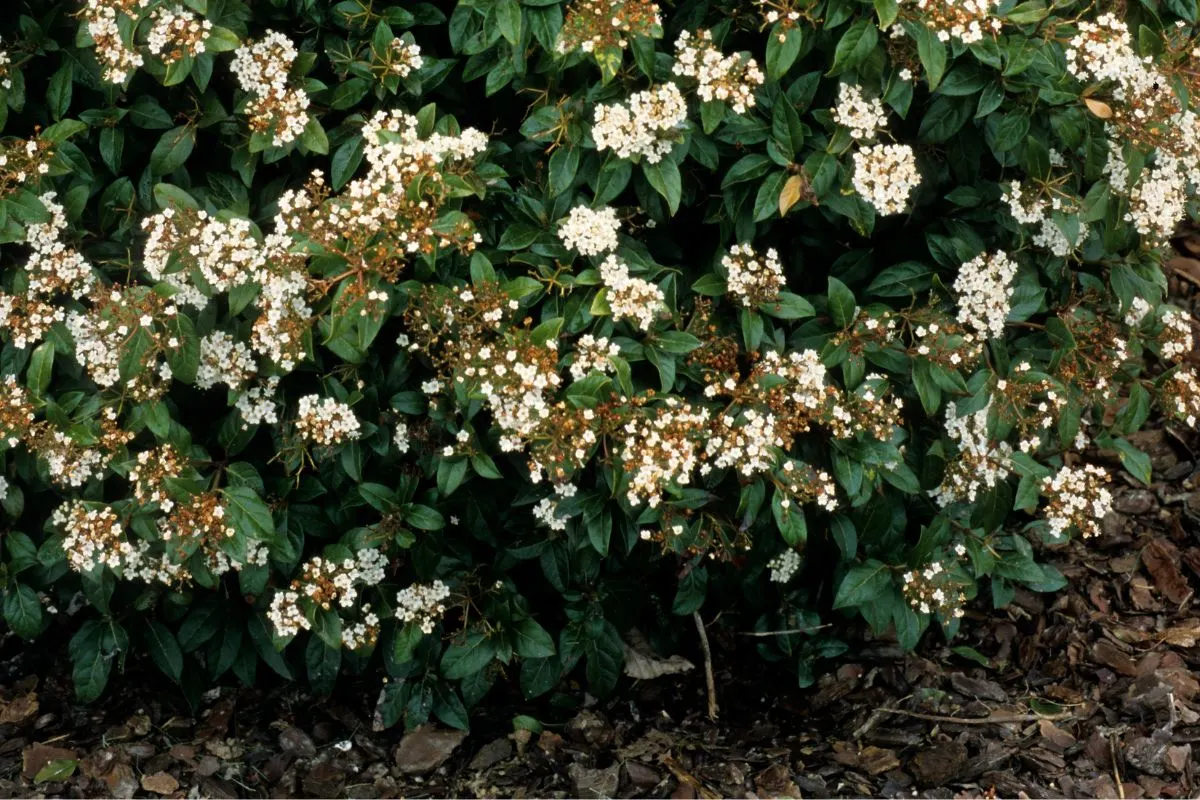
The Viburnum genus offers multiple species that bloom in winter, with fragrant flowers that range from pink to white. These shrubs add structure and scent to the garden, with some varieties providing interest all year round.
Viburnums are adaptable and can grow in various soil types, preferring full sun to slight shade. Their presence enhances any garden with their sweet aroma and beautiful blooms.
9. Mahonia: Bold and Beautiful
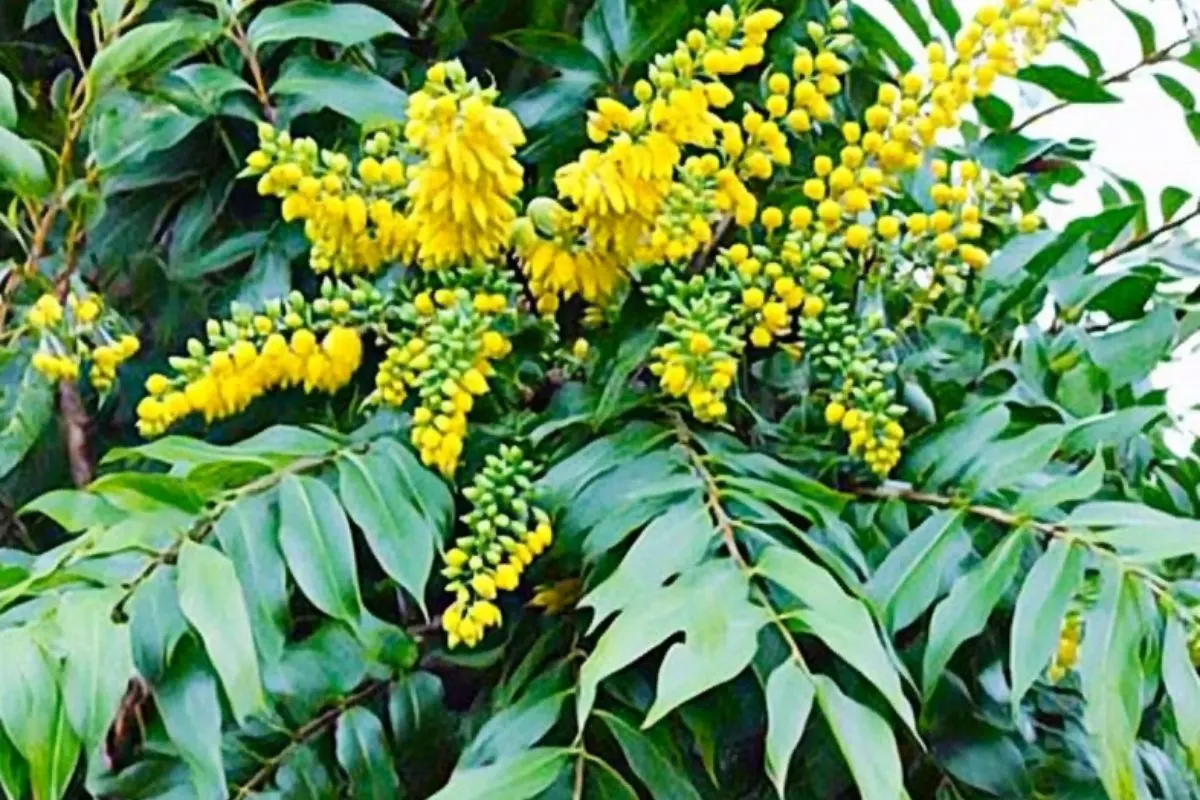
With its bold, architectural form and bright yellow flowers, Mahonia is a standout choice for winter gardens. The flowers are followed by blue-black berries, providing visual interest and food for birds.
Mahonia is versatile, adapting well to a variety of light conditions, from full sun to shade. It’s a robust shrub that adds height and drama to any garden setting.
10. Heather: Winter’s Subtle Charm
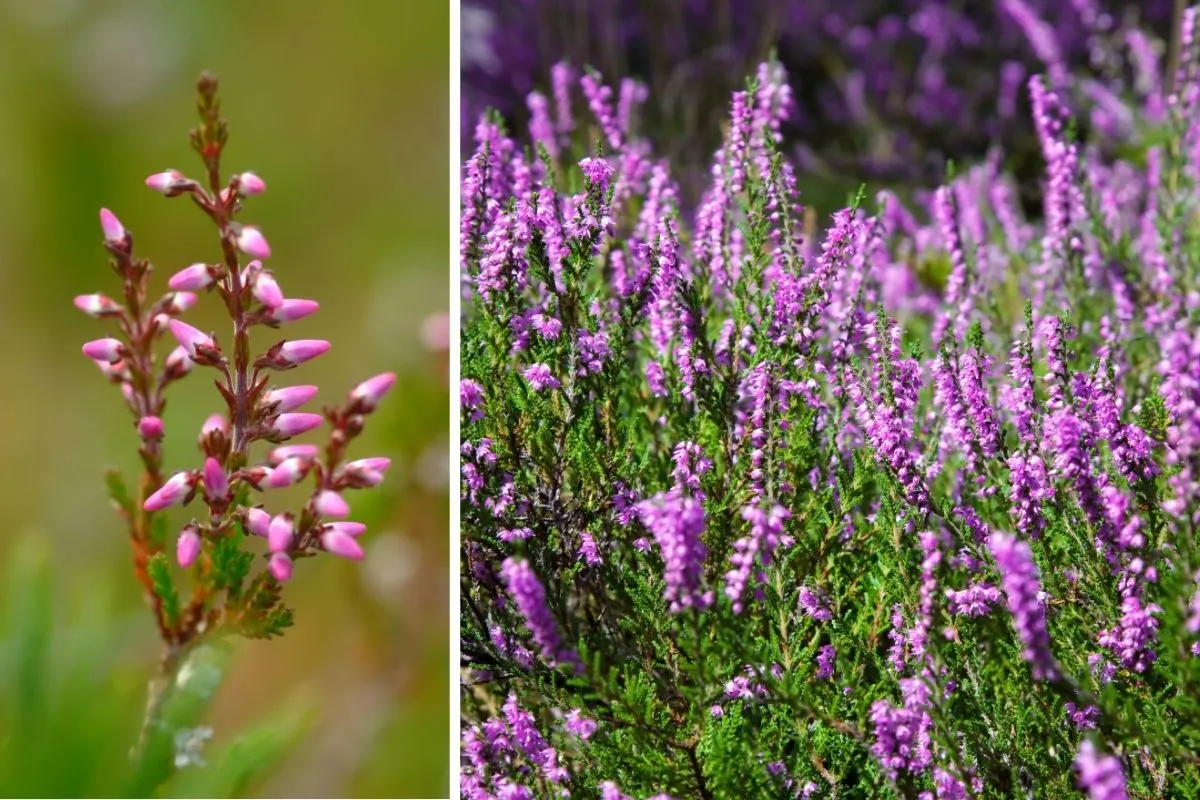
Heather is a classic choice for a winter garden, offering low-growing and dense mats of tiny flowers. They bloom in shades of white, pink, and purple, providing a subtle charm that’s hard to resist.
This perennial thrives in well-drained, acidic soil. Use it to edge paths or fill gaps in rockeries, where it will attract pollinators and offer color even on the frostiest days.
11. Sarcococca: Sweet Box
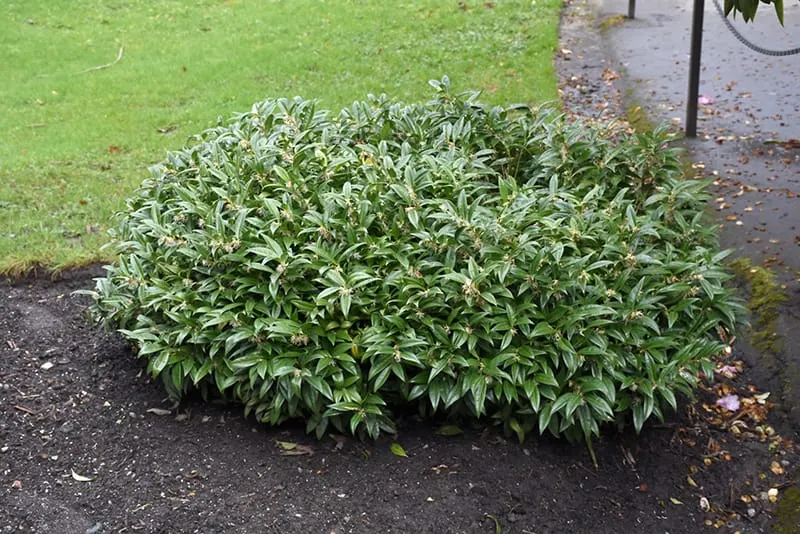
Sarcococca, or sweet box, is notable for its small, fragrant flowers that bloom from winter into early spring. Despite their size, these flowers pack a punch with their scent.
Sarcococca prefers shade and is perfect for planting near doorways or windows where you can enjoy its fragrance. It also serves as an excellent ground cover in shaded areas.
12. Cornus: Dogwood’s Vibrant Stems

While Cornus, or Dogwood, is more known for its stems than its flowers in winter, its contribution to the garden’s color palette is undeniable. The stems, in shades of red, orange, and yellow, create a striking contrast against the snow.
They’re low-maintenance and thrive in moist soil conditions. Prune them in early spring to encourage new growth, which will ensure vivid stem color comes winter.
13. Daphne: Aromatic Delight
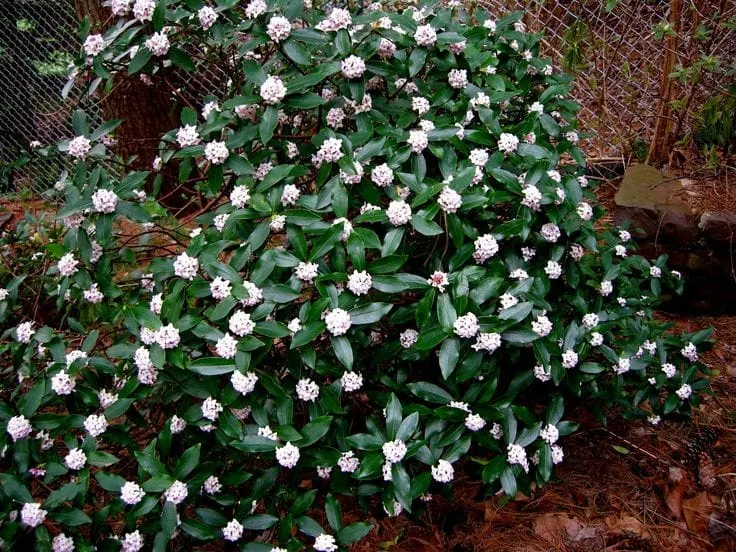
The aromatic blooms of Daphne shrubs bring elegance and fragrance to the winter garden. These evergreen shrubs are known for their clusters of star-shaped flowers, which can range from white to pink.
Daphnes prefer a sheltered position in full sun to partial shade. While they’re a bit fussy about growing conditions, the rewards of their delightful fragrance are well worth the effort.
14. Bergenia: Resilient Blooms
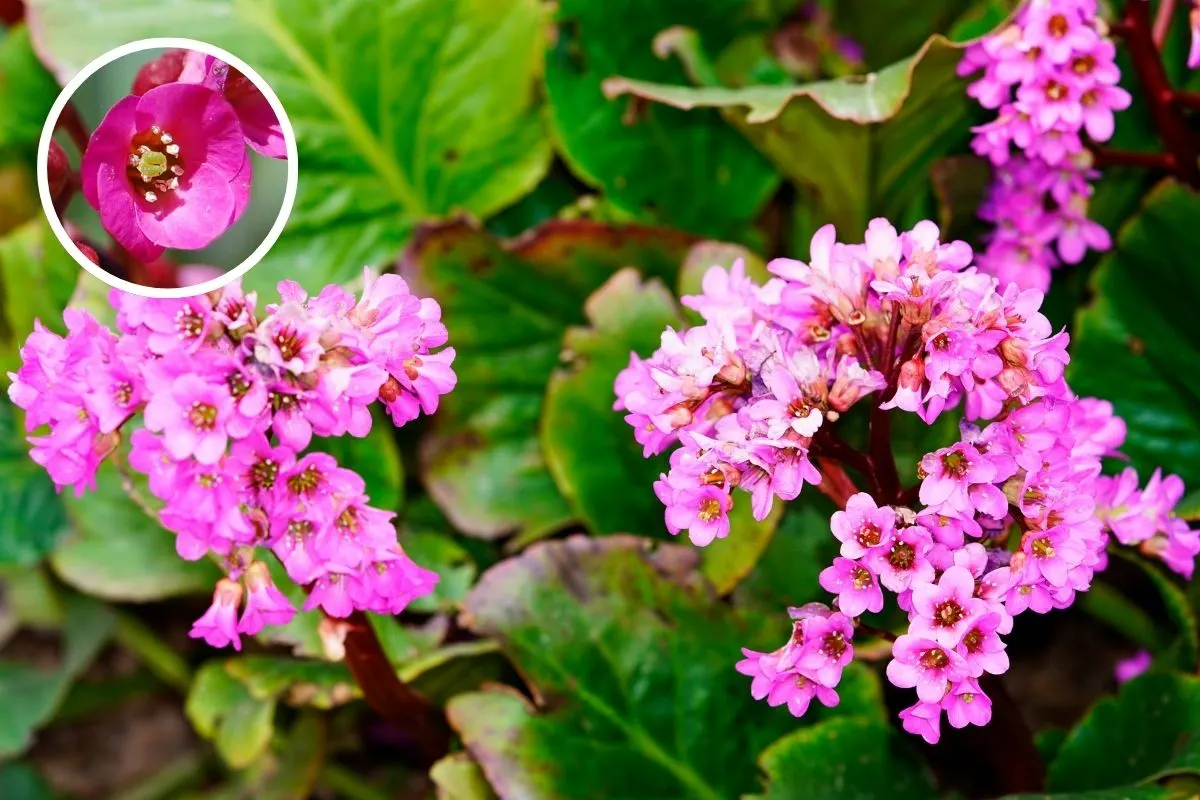
Often called ‘Elephant Ears’ due to their large leaves, Bergenia flowers in vibrant shades of pink and magenta during winter. Their leathery leaves also provide year-round interest.
These perennials are tough and can withstand the cold, making them perfect for difficult spots in the garden. They thrive in sun or partial shade and can help create eye-catching winter displays.
Bringing Color to Your Winter Garden
Integrating winter blooms into your garden ensures that color, fragrance, and life persist throughout the colder months.
By selecting a variety of species suited to your garden’s conditions, you can enjoy a dynamic and vibrant landscape all year round, offering a welcoming oasis not just for yourself but for local wildlife as well.
So, as you sip your warm beverage while gazing out at your snow-covered garden, take satisfaction in knowing that with thoughtful planning, winter need not be a season of stark barrenness.

